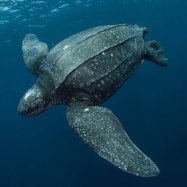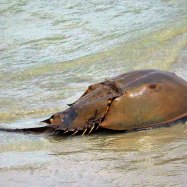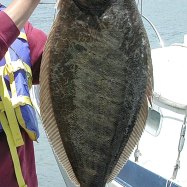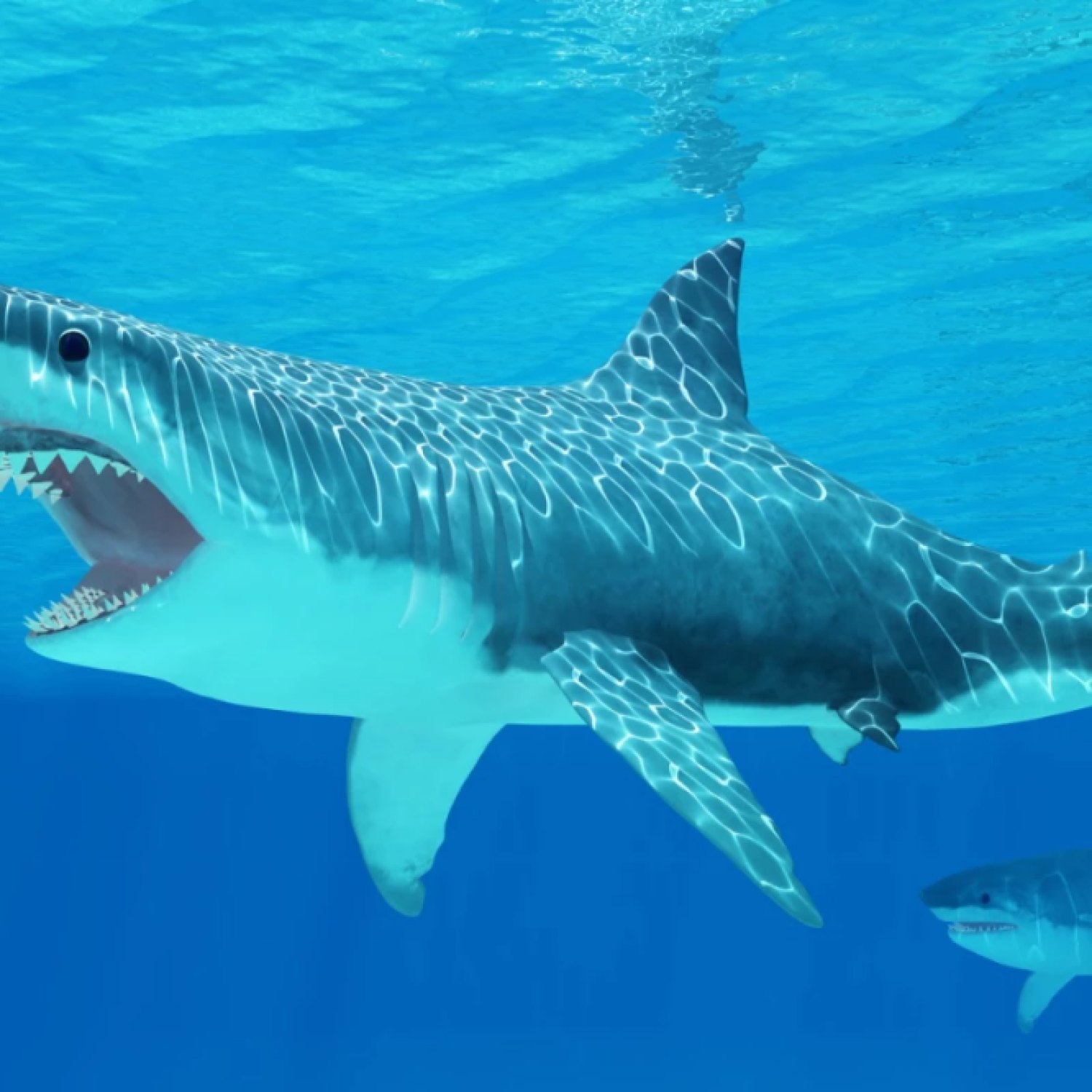
Megalodon
Up to 60 feet
Dive into the fascinating world of prehistoric creatures with the Megalodon. This massive shark, with a length of up to 60 feet, ruled the oceans millions of years ago. Belonging to the Otodontidae family, its large and streamlined body allowed it to be a dominant predator. Despite its extinct status, the Megalodon's impact can still be seen in the ocean's ecosystem today. #Megalodon #prehistoricshark #oceanlife
Animal Details Summary:
Common Name: Megalodon
Kingdom: Animalia
Habitat: Marine
The Mighty Megalodon: A Prehistoric Giant of the Seas
The ocean is home to many incredible creatures, from tiny plankton to majestic whales. But none compare to the massive and fearsome Megalodon. This ancient shark is one of the most intriguing and mysterious creatures to have ever lived, inspiring books, movies, and endless fascination. In this article, we'll dive deep into the world of the Megalodon, exploring its scientific name, habitat, feeding methods, and more Megalodon.An Introduction to the Megalodon
The Megalodon, whose scientific name is Carcharocles megalodon, is also commonly known as the "big tooth" or "giant tooth" shark. This massive creature lived approximately 23 to 3.6 million years ago, during the Early Miocene to the Pliocene epochs. It belongs to the Animalia kingdom and the Chordata phylum, making it a vertebrate animal with a spinal cord. Its class is Chondrichthyes, a group that includes sharks, rays, and chimeras.A Fearsome Predator
The Megalodon belonged to the order Lamniformes, which includes modern-day sharks such as the great white and basking shark. However, the Megalodon was the largest shark to ever exist, with an estimated length of up to 60 feet. To put that into perspective, the average length of a great white shark is only about 15 feet. Its massive size gave it an advantage as a predator, allowing it to hunt and devour large prey Mole Snake.A Marine Habitat
The Megalodon was a marine animal and lived in the ocean, making its home in a variety of habitats from coastal waters to the open sea. Its geographical distribution was global, meaning it could be found in oceans all around the world. This included areas such as Europe, Africa, North and South America, and Australia. It is believed that the Megalodon lived in warm, temperate waters, and it preferred to stay close to the surface of the water where the most food could be found.A Carnivorous Appetite
As a predator, the Megalodon's feeding method was carnivorous, meaning it only ate other animals. Its diet mostly consisted of large marine mammals such as whales, dolphins, and seals. However, it is also believed to have eaten other sharks, fish, and even sea turtles. Its massive jaws, lined with rows of sharp teeth, allowed it to take down its prey with ease. The Megalodon's teeth were triangular and serrated, making them perfect for gripping and tearing flesh. It is estimated that it could bite with a force of up to 18 tons, making it one of the most powerful predators in history.The Dark Side of the Megalodon
While much of our fascination with the Megalodon comes from its impressive size and power, its extinction is a reminder of the fragility of life. It is believed that the Megalodon went extinct around 3.6 million years ago, during the Pliocene epoch. There are several theories as to why this happened, including a decline in the Megalodon's prey due to changes in the ocean's environment and competition with other predators. However, one of the most widely accepted theories is that the Megalodon was unable to adapt to the changing climate and food sources, leading to its eventual extinction.The Legacy of the Megalodon
Despite going extinct millions of years ago, the Megalodon continues to capture our imagination. Its immense size and fearsome reputation have made it a popular subject for books, movies, and TV shows. However, its impact goes beyond entertainment. Fossils of the Megalodon have provided valuable insights into the ancient ocean's ecosystem, and its extinction has sparked important conversations about conservation and the delicate balance of our planet's ecosystems.In Conclusion
In conclusion, the Megalodon was a remarkable creature that ruled the oceans for millions of years. Its size, power, and ferocity continue to fascinate and captivate us, even though it is now extinct. As we continue to learn more about this prehistoric giant, we are reminded of the incredible diversity of life on Earth and the importance of preserving our planet's delicate ecosystems. Despite its massive size, the Megalodon serves as a humbling reminder that even the mightiest among us can fall prey to the forces of nature.

Megalodon
Animal Details Megalodon - Scientific Name: Carcharocles megalodon
- Category: Animals M
- Scientific Name: Carcharocles megalodon
- Common Name: Megalodon
- Kingdom: Animalia
- Phylum: Chordata
- Class: Chondrichthyes
- Order: Lamniformes
- Family: Otodontidae
- Habitat: Marine
- Feeding Method: Carnivorous
- Geographical Distribution: Global
- Country of Origin: Extinct
- Location: Oceans
- Animal Coloration: Dark gray
- Body Shape: Large, streamlined
- Length: Up to 60 feet
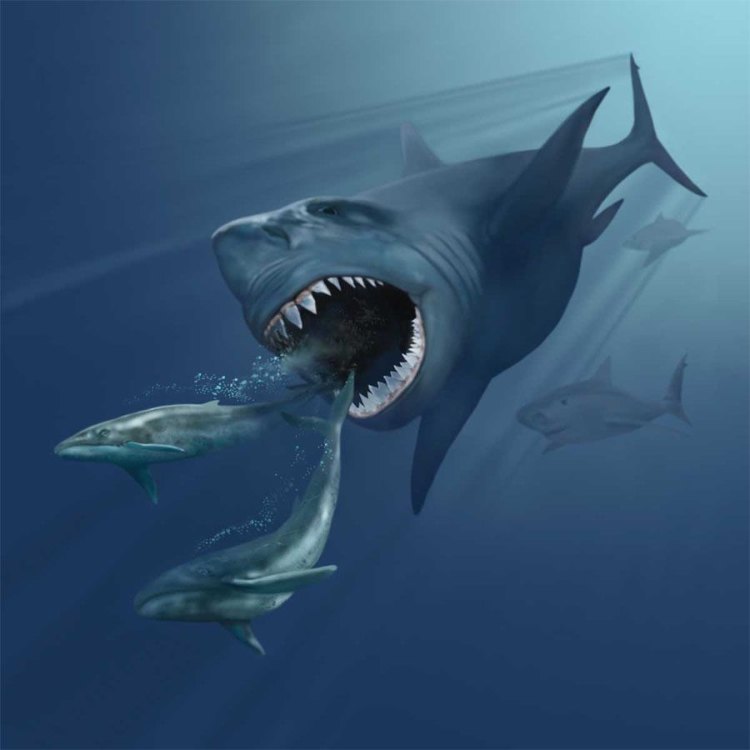
Megalodon
- Adult Size: Unknown
- Average Lifespan: Estimated to be 20-30 years
- Reproduction: Viviparous
- Reproductive Behavior: Unknown
- Sound or Call: Unknown
- Migration Pattern: Unknown
- Social Groups: Unknown
- Behavior: Apex predator
- Threats: Extinction
- Conservation Status: Extinct
- Impact on Ecosystem: Unknown
- Human Use: None
- Distinctive Features: Large size, massive teeth
- Interesting Facts: Megalodon was one of the largest and most powerful predators to have ever lived.
- Predator: Apex predator
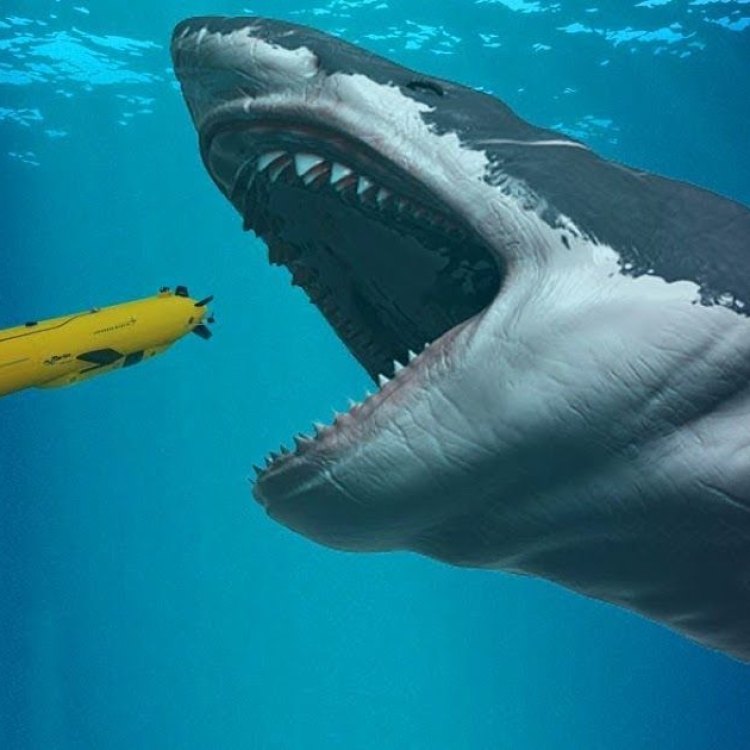
Carcharocles megalodon
The Magnificent and Mysterious Megalodon: Uncovering the Unknowns of the Apex Predator
As far as prehistoric creatures go, few are as awe-inspiring and mysterious as the megalodon. This massive species of shark, often referred to as the "giant white shark," is believed to have roamed the oceans approximately 23 to 3.6 million years ago. Despite its extinction, the megalodon continues to capture our imagination and fascination due to its remarkable features and the many unknowns that surround it PeaceOfAnimals.Com.So, what exactly do we know about this magnificent creature? As it turns out, not as much as we would like to think. Let's dive deeper into the data and explore the unique features and behavior of the megalodon.
Unknown Adult Size
One of the most mind-boggling aspects of the megalodon is its size. While we know that this prehistoric shark was massive, its exact adult size remains a mystery. Scientists estimate that the megalodon could reach lengths of up to 60 feet, making it one of the largest known predators to have ever existed. However, some theories suggest that it could have grown even larger, with some estimates reaching up to 100 feet in length.
To put this into perspective, the largest living predator today is the great white shark, which typically grows to around 20 feet in length. The megalodon's sheer size is enough to strike fear into the hearts of anyone who dares to imagine encountering one in the wild.
20-30 Year Average Lifespan
While the megalodon's size may have been its most defining feature, its lifespan remains another mystery Monkey. Based on comparison to other shark species with similar growth rates, scientists estimate that the megalodon may have lived for about 20-30 years. This may seem relatively short, considering the giant shark's massive size, but it is in line with other apex predators' lifespan.
Viviparous Reproduction
One of the few things we do know about the megalodon's reproductive behavior is that it was viviparous, meaning it gave birth to live young. This method of reproduction is common among modern-day sharks and is often seen as an evolutionary adaptation to ensure the survival of the species.
However, we know nothing about the megalodon's mating rituals or how they raised their young, adding to the many mysteries surrounding this prehistoric predator.
Unknown Reproductive Behavior
While we understand that the megalodon reproduced viviparously, its exact reproductive behavior is still unknown. Did they mate for life, or was it a solitary species? Did they gather in groups during the breeding season, or did they reproduce all year round? These are just some of the questions that remain unanswered, leaving us to speculate on the megalodon's intimate life.
Unknown Sound or Call
Communication is vital in the animal kingdom, and sharks are no exception. Many species of sharks produce distinct sounds to communicate with each other, indicating dominance, attracting mates, or warning of potential danger.
Unfortunately, the megalodon's vocalizations remain a mystery due to the lack of evidence. However, some scientists theorize that this massive predator may have produced low-frequency sounds to communicate with other marine creatures. Given its size, the megalodon's call could have been powerful enough to be picked up by other animals miles away.
Unknown Migration Pattern
Migration is a common behavior seen among many animal species, including sharks. However, we have no evidence of the megalodon's migration pattern. Theories range from a nomadic lifestyle to yearly migrations to follow prey or mate. Without substantial evidence, it's impossible to know for sure.
Unknown Social Groups
Another mystery surrounding the megalodon is its social behavior. Did these massive sharks live solitary lives, or did they form social groups? Some theories suggest that they may have gathered in large groups during the mating season or when hunting for large prey. However, without concrete evidence, it's impossible to know whether the megalodon was a lone hunter or a social creature.
Apex Predator Behavior
Despite the many unknowns surrounding the megalodon's behavior, one thing is certain – it was an apex predator through and through. With its massive size, sharp teeth, and efficient hunting techniques, the megalodon reigned at the top of the food chain during its time. It is believed to have preyed on a variety of marine creatures, including whales and other large sharks.
Threats and Extinction
As intimidating as the megalodon may seem, it was not invincible. Scientists theorize that the megalodon's decline may have been due to a decrease in the availability of its preferred prey. As the ocean's climate changed, food sources for the megalodon may have reduced, and without enough food, these giants could not sustain their tremendous size.
It is also possible that competition from other predators, such as orcas and sperm whales, may have played a role in their extinction. Whatever the exact cause, the megalodon eventually became extinct around 3.6 million years ago, leaving behind nothing but speculation and a few fossilized teeth.
Extinction and Impact on Ecosystem
As with any apex predator, the megalodon's extinction has caused a ripple effect throughout the ocean's ecosystem. Its disappearance may have affected the population sizes of its prey and other species, leading to changes in the food chain.
However, the exact impact of the megalodon's extinction on the ecosystem remains unknown, as scientists are still working to understand its behavior and role in the ocean's health.
Human Use
One of the unique and fortunate facts about the megalodon's extinction is that it occurred long before humans roamed the Earth. This means that the megalodon was not exploited for its resources, unlike many other species that are threatened by human activity.
Distinctive Features: Massive Size and Teeth
While the megalodon's size alone makes it a remarkable creature, its massive teeth are another defining feature. These teeth were sharp, serrated, and could grow up to seven inches in length. They were vital tools for the megalodon's hunting and feeding, capable of easily piercing the thick hides of its prey.
Interesting Facts
Aside from its size and teeth, there are many other fascinating aspects of the megalodon. For one, its closest living relative is the great white shark, with whom it shares a similar body structure and hunting techniques. The megalodon's bite force was also estimated to be up to 20 times stronger than that of a great white shark, making it a formidable predator.
Additionally, despite being extinct for over three million years, the megalodon continues to capture the public's imagination. It has been featured in numerous books, films, and documentaries, adding to its mystique and making it a pop culture icon.
Conclusion
The megalodon remains one of the most mysterious and awe-inspiring creatures to have ever lived. It's massive size, powerful teeth, and unknown behavior have captured our imagination and fascination. While we may never know all the secrets of this prehistoric predator, the continuous exploration and study of its fossils continue to provide insights into its life and legacy. The megalodon may be extinct, but its impact on our understanding of sharks and the ocean's ecosystem continues to be significant.
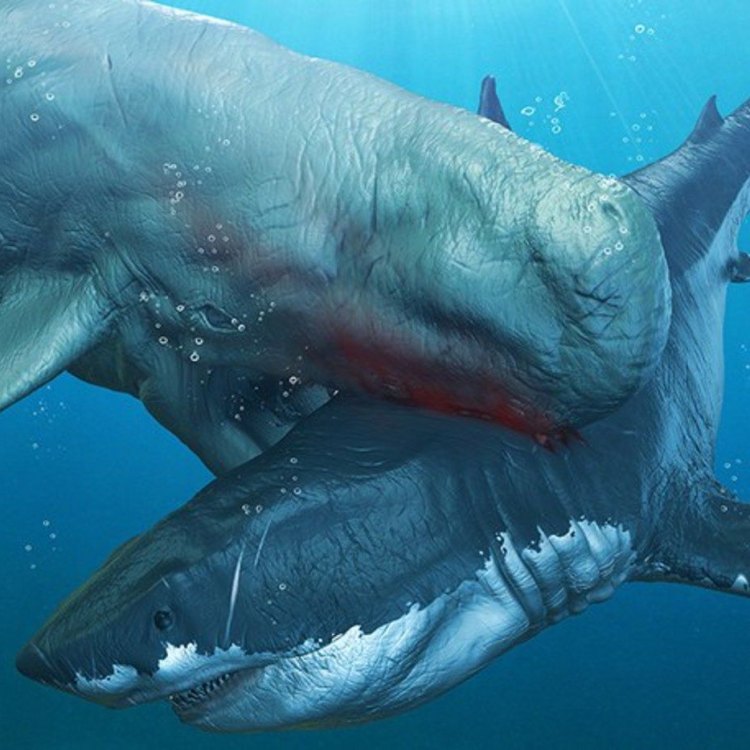
The Mighty Megalodon: A Prehistoric Giant of the Seas
Disclaimer: The content provided is for informational purposes only. We cannot guarantee the accuracy of the information on this page 100%. All information provided here may change without prior notice.






